Klatskin Tumor - Cholangiocarcinoma (Bile Tract Cancer)
İçindekiler
- 1 Klatskin Tumor - Cholangiocarcinoma (Bile Tract Cancer)
- 1.1 Klatskin Tumor
- 1.2 Symptoms of Biliary Tract Cancer
- 1.3 Types and Stages of Klatskin Tumor
- 1.4 What tests are done to check for bile duct cancer?
- 1.5 Can all patients with Klatskin's tumor have successful surgery?
- 1.6 The following slides provide a summary of the treatment of Klatskin's tumor in the form of guidelines:
The entire structure that carries the bile produced in the liver tissue to the intestines, from the small micron-level branches, like the branches of a tree, to the main bile duct, which we can call the trunk of the tree, constitutes the biliary tract system, biliary tract cancers can develop anywhere in the liver.
Klatskin Tumor
Of all the major vascular structures in the liver, the biliary tract is the most prominent (the green one in the figure below). Behind this is the artery of the liver (red in the figure below), and behind this is the nourishing vein of the liver (purple in the figure below). When biliary tract cancer occurs at the intersection of the three pathways where the right and left sections of the liver join the main bile duct, it is called a Klatskin tumor. So Klatskin’s tumor is also a biliary tract cancer or cholangiocarcinoma, but if it involves the part we are talking about, it also gets this name (pale yellow round with dashed lines in the figure below).
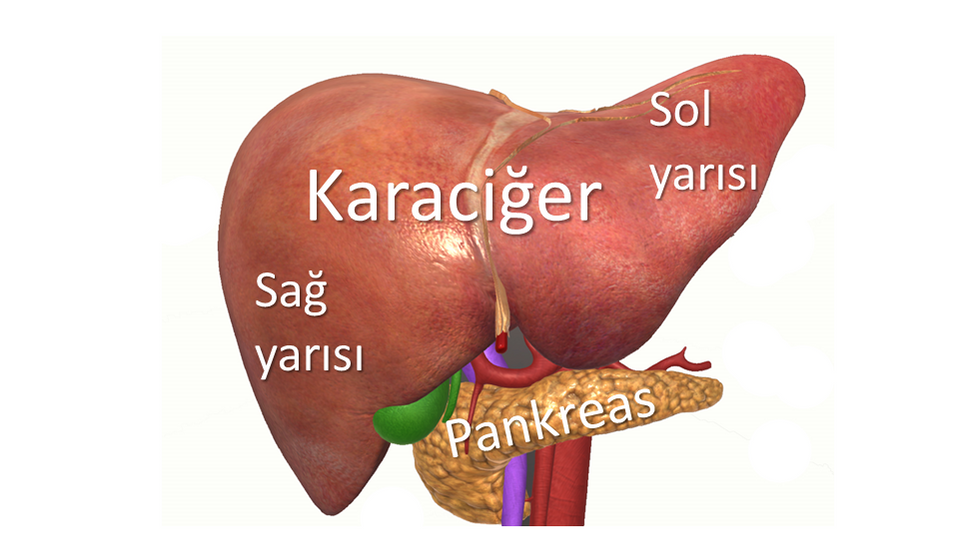
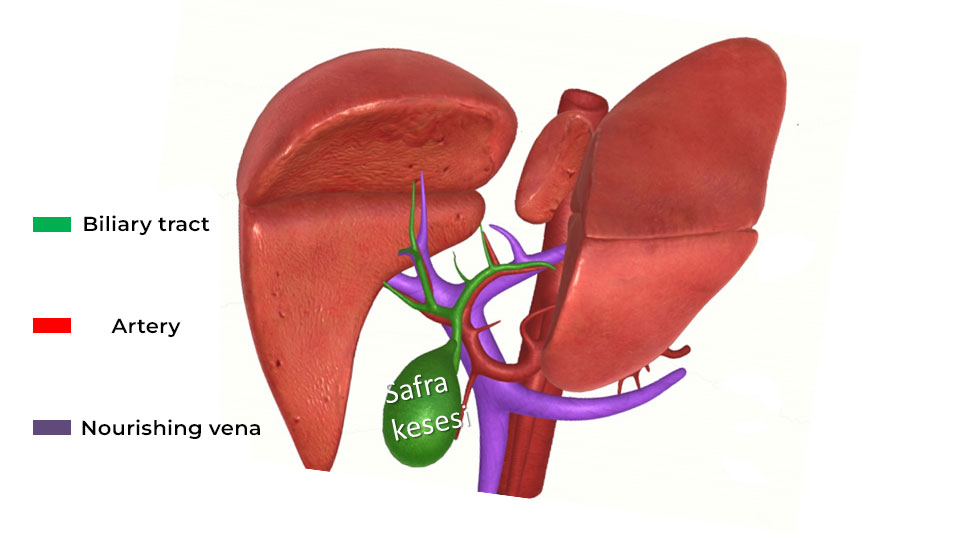
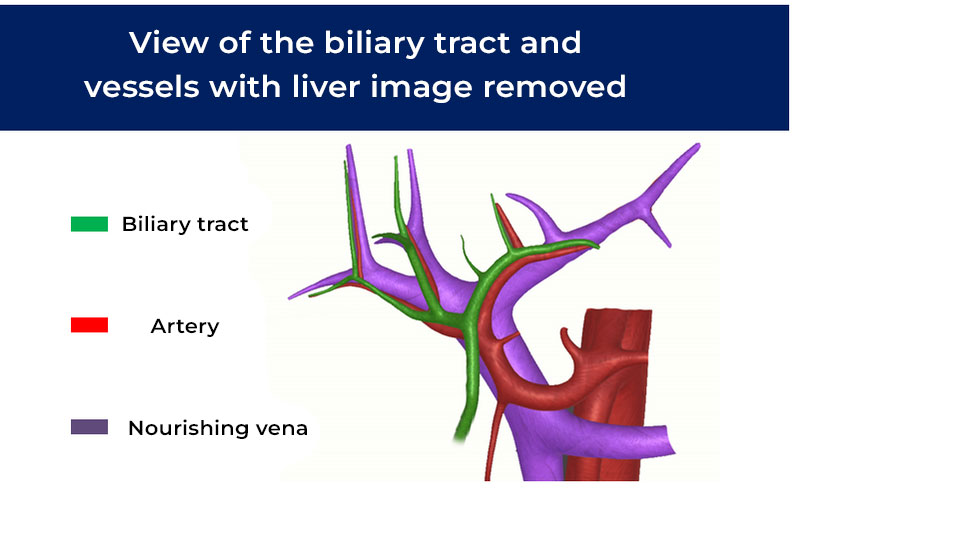
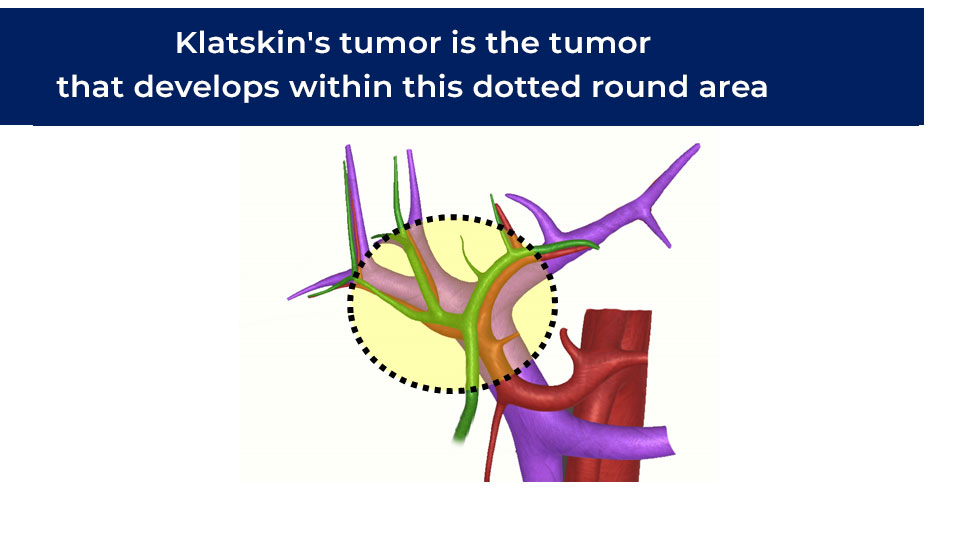
Symptoms of Biliary Tract Cancer
Jaundice, abdominal pain, weakness, and weight loss are the most common symptoms of biliary tract cancer. Fever may also accompany symptoms if there is inflammation of the biliary tract. Jaundice, a common condition in Klatskin’s tumor, develops due to obstruction of bile flow by the tumor. Abdominal pain may occur due to both difficulties in the flow of bile and stretching of the liver capsule. Anorexia is often caused by the tumor, and fatigue and weight loss due to the tumor’s use of energy and nutrients also occur.
Types and Stages of Klatskin Tumor
Cholangiocarcinoma is called Klatskin’s tumor when it involves the junction of the right and left common bile ducts. However, it is important to how the tumor grows in this area. This is because the treatment is shaped accordingly. This means that not all Klatskin tumors are treated with the same surgery. The preparation before surgery and the type of surgery varies. The type and stage of the disease are different concepts. Stage categorizes the extent to which the disease has spread to adjacent vessels and organs. Stages are also numbered from 1 to 4.
Depending on its location, Klatskin’s tumor is divided into the types shown in the figures below. These can be simply classified as Type 1, Type 2, Type 3A, Type 3B, and Type 4. Type 1 tumors involved only the common bile duct, and Type 2 tumors involved the common bile duct as well as the right and left ducts (yellow round areas in the figures below).
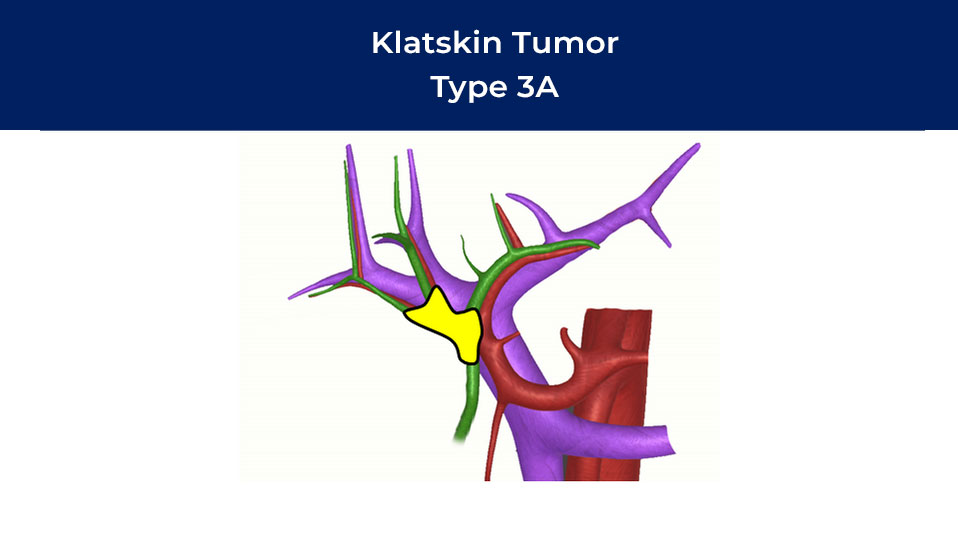
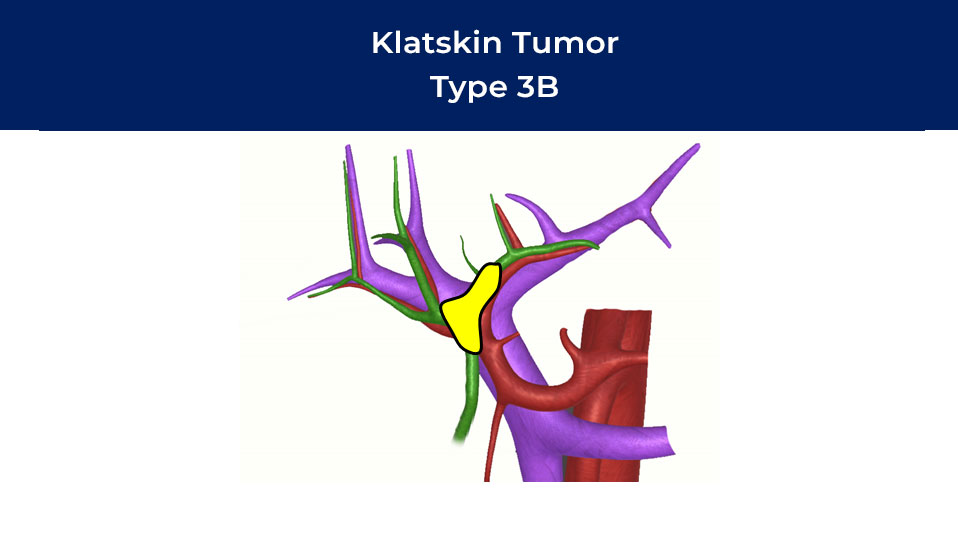
Type 3A Klatskin tumor occurs in the common bile duct at the junction of the right and left ducts, extending more to the right side. Type 3B tumors are biliary tract cancers that extend more to the left side (yellow areas shown in the figures below).
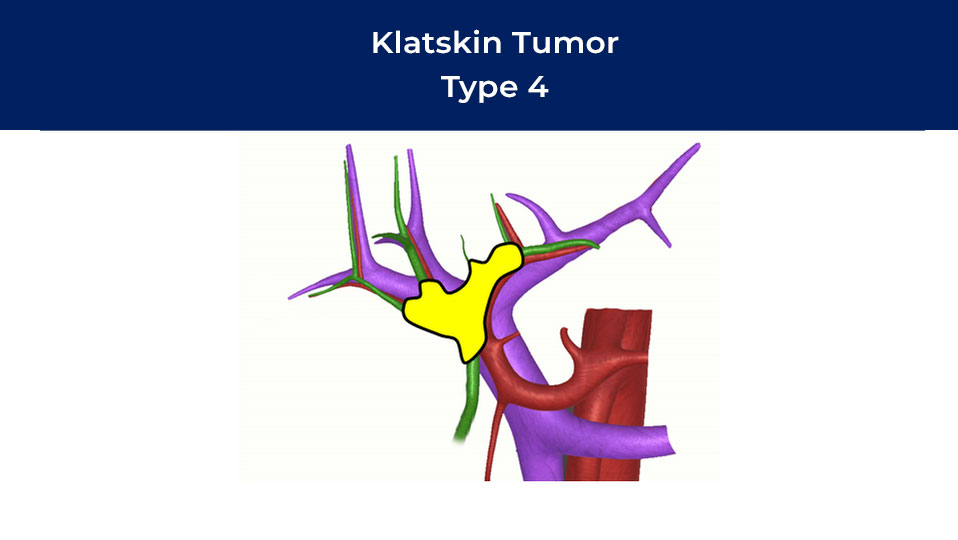
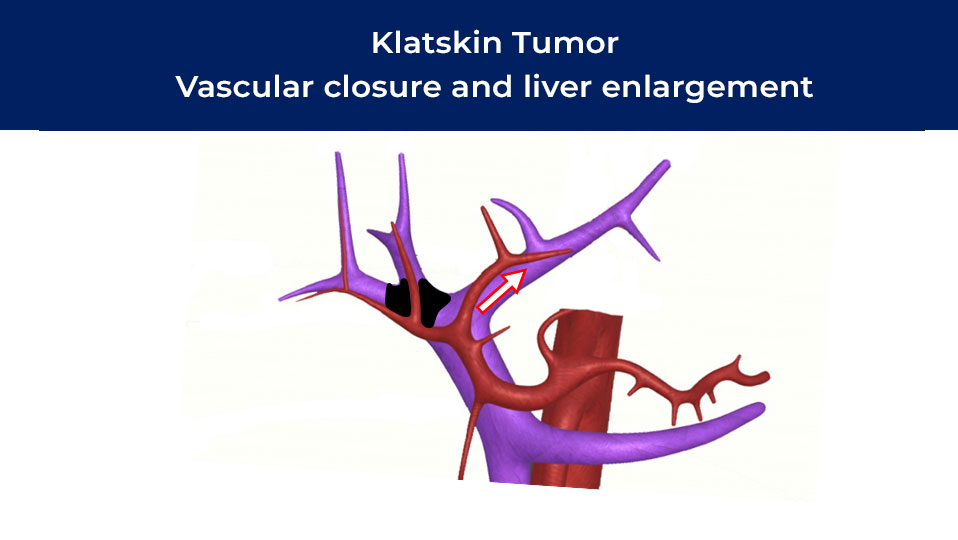
What tests are done to check for bile duct cancer?
In patients with suspected cholangiocarcinoma, comprehensive blood tests, as well as ultrasound, tomography, MRI and MRCP imaging tests of the liver, are used to make the diagnosis. In some cases, PET imaging and scintigraphy are also required. Among these examinations, special tomography and MRCP imaging methods for the liver are considered indispensable. The diagnosis of cholangiocarcinoma may require a biopsy, but in some cases with all the signs of biliary tract cancer, surgery can be performed without a tissue diagnosis.
Can all patients with Klatskin's tumor have successful surgery?
Every Klatskin’s tumor patient can theoretically have surgery. However, if certain conditions related to the patient and the disease are met, this surgery can be successful in the short and long term. Namely, what is important is not only to perform this operation technically but also to achieve success by significantly reducing the possibility of recurrence afterward.
So what are these conditions?
- Once bile duct cancer is detected, good staging should be done. The Spread of the disease to intact tissues distant from the tumor in the liver or to the peritoneum means that the disease is in the last stage and the chances of benefit from surgical treatment are very low.
- Jaundice (Bilirubin) levels measured in the blood should be reduced below 3 mg. In many patients with cholangiocarcinoma Klatskin tumor, marked jaundice is present. If liver surgery is performed in this condition, postoperative liver failure develops. Therefore, bile flow is first relieved with catheters or stents placed in the biliary tract, and surgery is performed when jaundice improves.
- Infection must be controlled in the patient. If patients with bile duct infections are operated on directly, the risk of postoperative liver failure and abdominal infection increases.
- Vascular occlusion procedures may be needed. In the event that it is anticipated that the remaining liver will not be enough for the patient after the operation, a blockage is performed in the feeding vein on the side to be removed, so that more blood is supplied to the remaining part to ensure that it grows. To ensure adequate growth, it may be necessary to wait a few weeks after the plugging procedure. Directly operating on a patient who requires vascular occlusion and performing a smaller surgery may prevent the complete removal of tumor tissue.
- Obesity is a risk factor for failure, especially after major liver surgery. People of normal weight are less likely to experience insufficiency. This, of course, does not mean that preoperative malnutrition should lead to a disturbance of the body’s nutritional balance. Avoiding weight gain or losing a few pounds with a balanced diet during the waiting period can be beneficial.
- Compared to other liver surgeries, Klatskin’s tumor is a disease that requires better and more meticulous preoperative preparation and the surgical technique is different. Therefore, it should be treated by a specialized team.
The following slides provide a summary of the treatment of Klatskin's tumor in the form of guidelines:
Klatskin Tumor
What is this disease?
It is actually cancer of the biliary tract.
It is so named if the cancer is located at the junction of the right and left common bile duct.
Simple 5 golden rules for a successful surgery in Klatskin Tumor:
Rule-1
Let the blood jaundice (Bilirubin) level below 3
This disease is often accompanied by jaundice. Ask your doctor about your Bilirubin level. Jaundice must improve first for a successful surgery.
Rule-2
Let liver augmentation methods be applied The amount of liver tissue that will remain after surgery should be measured, and if the amount is insufficient, vascular closure to enlarge the remaining portion should be performed before surgery.
Rule-3
Let the infection in the biliary tract be treated Any infection in the bile duct needs to be treated before surgery. Antibiotics and catheterization of the biliary obstruction are usually needed for this.
Rule-4
Do not put on weight and eat healthy before surgery Being obese is a factor that increases the risk of liver failure after surgery. If surgery is not immediate, then it is important to eat a balanced diet without gaining weight during this period.
Rule-5
Let the specialized team treat
The surgical process is vital in Klatskin’s tumor.
- Correct preparation
- Correct surgical technique
- Complete tumor removal
is the key to success.